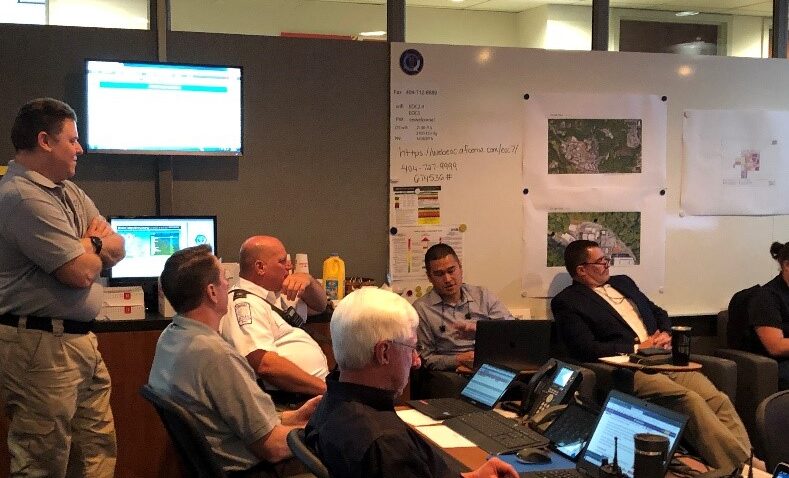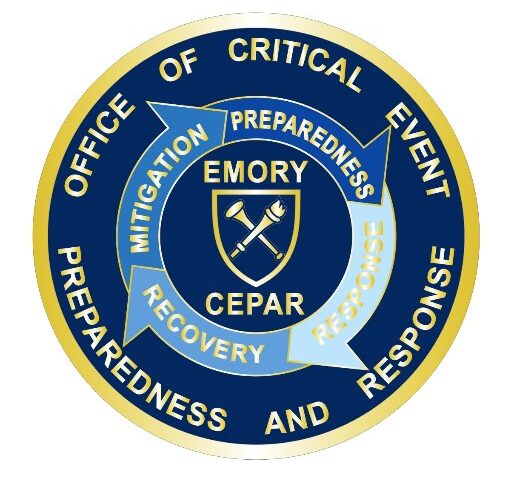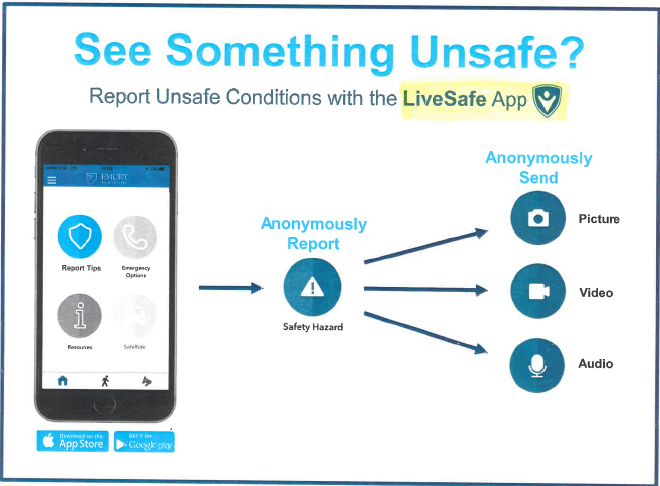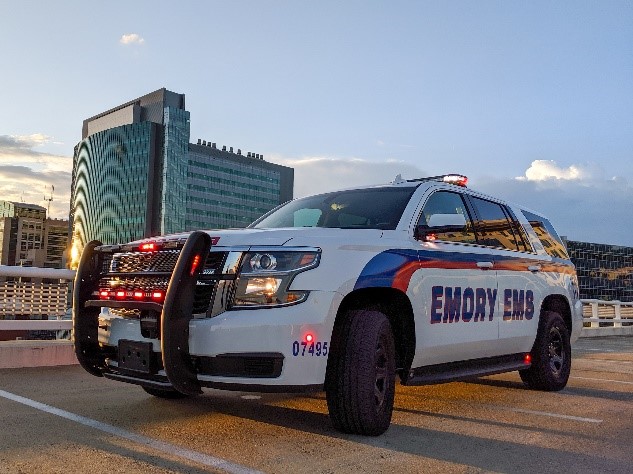Now that campus has returned to in person activities, investing the time to learn how to protect yourself and others when there is an emergency contributes to your personal safety, the community’s safety, and to community resilience. September is National Preparedness Month, scheduled each fall in partnership with the Federal Emergency Management Agency to help communities be better equipped for the risks of accidents and disasters.
CEPAR notes that the launch of a new academic year brings with it a reminder for the campus community to prepare for the unexpected, including updating contact information within Emory’s Emergency Notification Program, downloading the LiveSafe Safety app and discovering which campus locations have been designated as severe weather refuge locations.
At Emory, emergency resources are in the palm of your hand, by using LiveSafe, a free mobile app. Developed for smartphones and tablets, the LiveSafe app provides a quick, convenient and discreet way for students, faculty and staff to communicate directly with Emory University public safety officials.
Key features of the app allow members of the campus community to:
- Call or message Emory University Police — or 911 — quickly. If you choose, a location-tracking feature can immediately signal your whereabouts to public safety officials.
- Quickly access a range of important campus safety resources, including information about emergency procedures, and health and wellness contacts.
- Receive push notifications of campus safety notifications and emergency alerts.
- Report safety concerns, accidents or crime tips in real-time to Emory police via text, photos, video or audio. The “Report Tips” function also allows you to immediately engage in a live chat with safety officials, if you choose.
- Navigate campus using a “SafeWalk” feature. The GPS-enabled location technology allows users to invite family, friends or colleagues to “virtually escort” them by following their location in real-time on a digital map. Alerts are sent when the user is delayed, has arrived or summons help.
CEPAR also developed the Emory University Preparedness Checklist, which provides directions for enrolling or updating emergency contact information in order to receive alerts in the face of severe weather, industrial accidents or police emergencies.
The checklists also offer:
- Basic safety information and reminders, such as a prompt to program phone numbers for Emory police departments — and adding an “In Case of Emergency” (ICE) number — into your personal mobile phone.
- Suggestions for establishing a simple emergency communication plan, so family and friends have an agreed-upon way to make contact during a campus or regional emergency.
- Prompts for knowing how to exit buildings if a primary pathway is blocked and where to seek shelter during severe weather.
- Handy contact information for campus emergency services, including health and counseling services, and the Emory Faculty Staff Assistance Program.
Emory Emergency Medical Service (EEMS) is a volunteer, student-led operation of Emory’s Office of Critical Event Preparedness and Response (CEPAR) which provides a medical first responder service for emergency and non-emergency medical care to Emory University students, faculty, staff, visitors, and the surrounding community. EEMS works in coordination with local EMS and fire departments to provide quality, professional, confidential, and expeditious emergency medical care. To request EMS, call 911 or call the Emory Police at 404-727-6111.
For Emory faculty, staff and students, the new semester is a great time to become familiar with the university’s emergency resources. Reviewing the CEPAR website is a good start. Just as people test the batteries in their smoke detectors annually, taking time to review Emory’s emergency procedures in LiveSafe or the Just-In-Time guide should be considered a yearly ritual.
Under the “Threat Assessment” tab, users can review contact information for a number of campus public safety resources and view a series of videos about “mitigating violence through compassion.”
These wide-ranging resources also offer guidance for what to do in the face of a variety of emergencies, including power failures, water and gas leaks, medical emergencies, chemical spills or laboratory accidents, and severe weather and weather-related campus closures.
For those who work on campus, being prepared for emergencies also means:
- Downloading LiveSafe.
- Talking with colleagues about basic office safety protocols, such as knowing where to take refuge during a tornado warning or an active shooter incident.
- Exercising caution about letting people into a locked building unless they’ve been properly identified.
- Calling the Emory Police if you note suspicious behavior in the workplace.
- Scheduling a Crime Risk Prevention Workshop with the Emory Crime Prevention Unit.
- Taking a first aid class, learning CPR, and learning bleeding control.
- Knowing where the nearest automated external defibrillator (AED) is located in your building and learning how to use it.
- Learning how to use a tourniquet.
- Following @EMORY_CEPAR on Twitter and /EmoryCEPAR on Facebook to receive monthly preparedness tips and emergency messages.
- Programming the Emory Police Department number 404-727-6111 into your mobile phone.
For more information on preparedness activities, please visit the CEPAR website, emergency.emory.edu.




